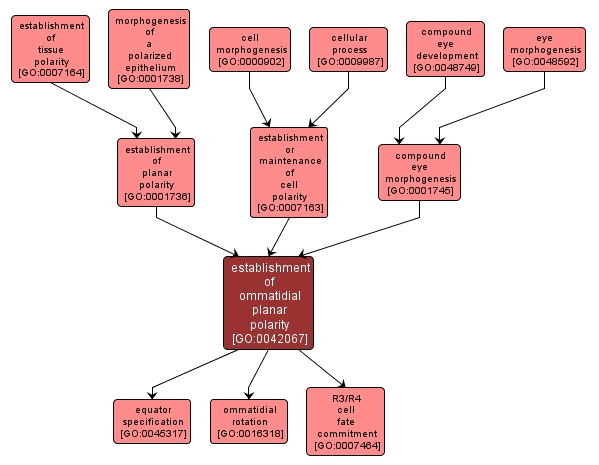GO TERM SUMMARY
|
| Name: |
establishment of ommatidial planar polarity |
| Acc: |
GO:0042067 |
| Aspect: |
Biological Process |
| Desc: |
The specification of polarized ommatidia. Ommatidia occur in two chiral forms. The trapezoidal arrangement of photoreceptors in the dorsal part of the eye is the mirror image of that in the ventral part. |
Synonyms:
- establishment of ommatidial polarity
|
|

|
INTERACTIVE GO GRAPH
|














